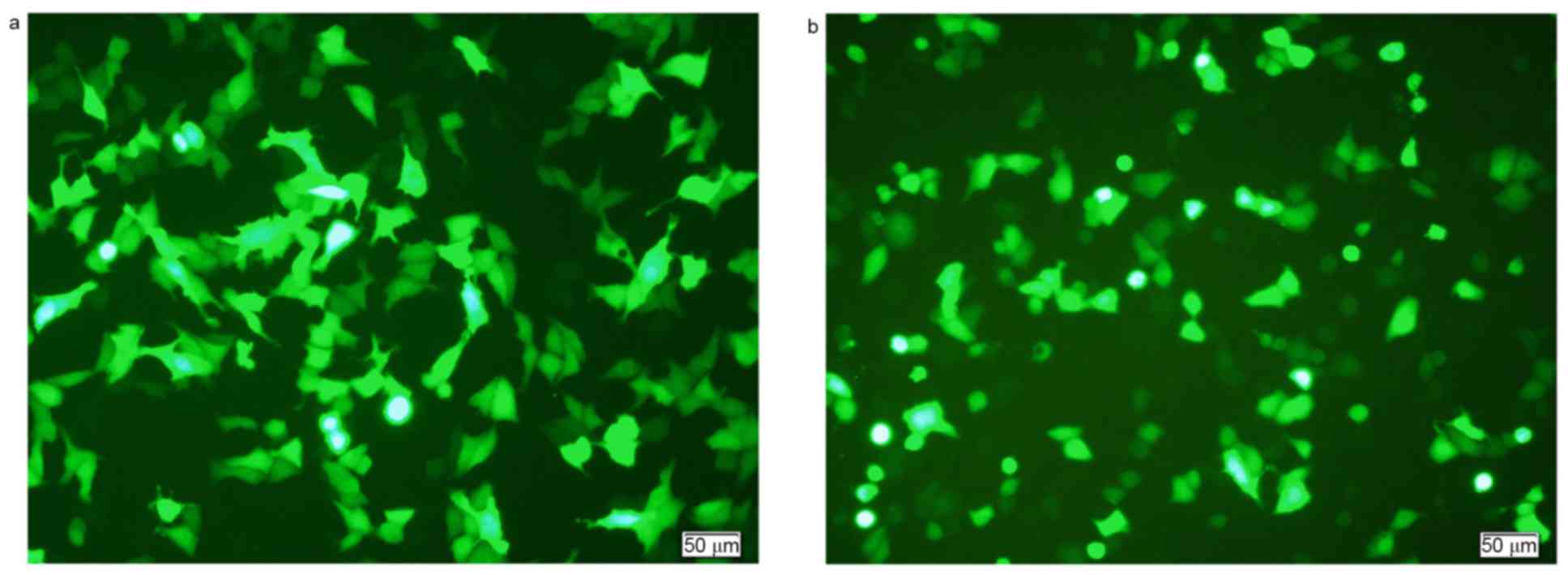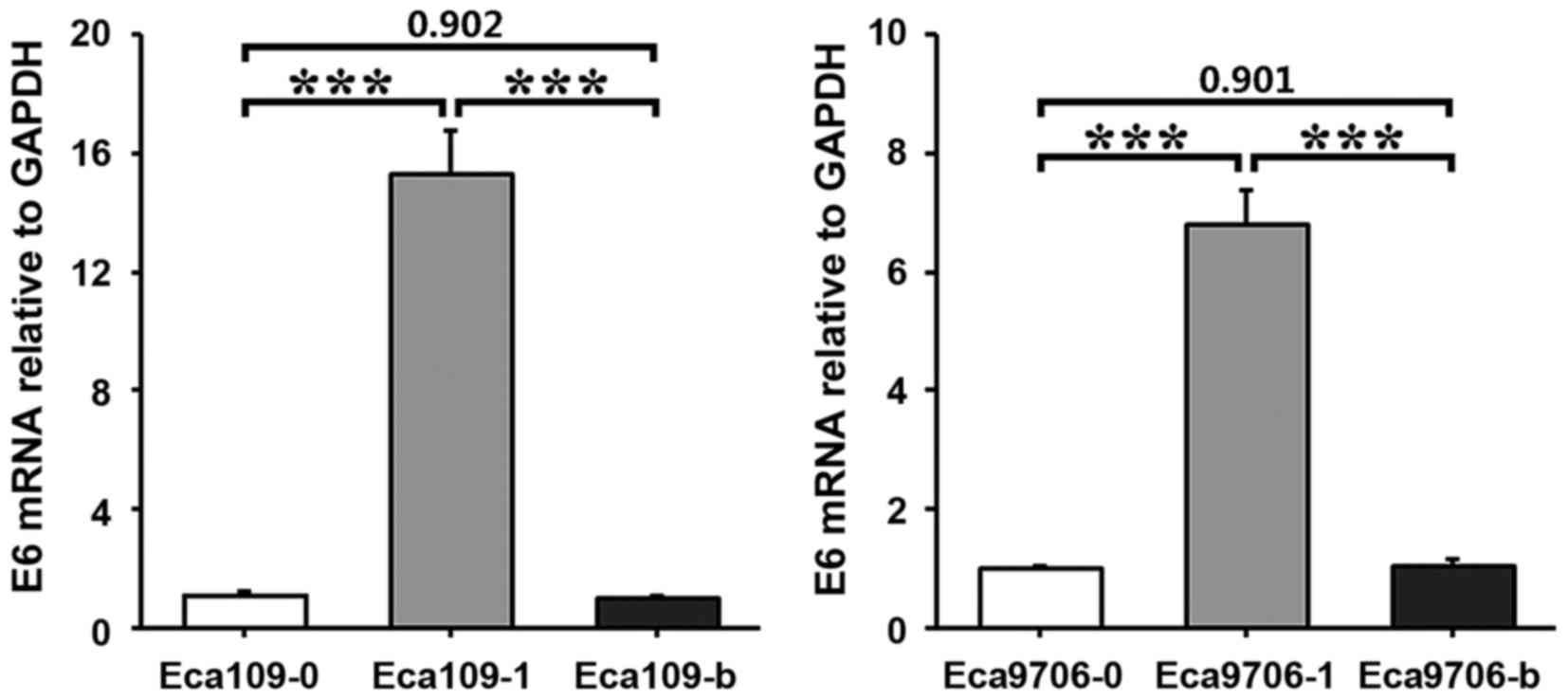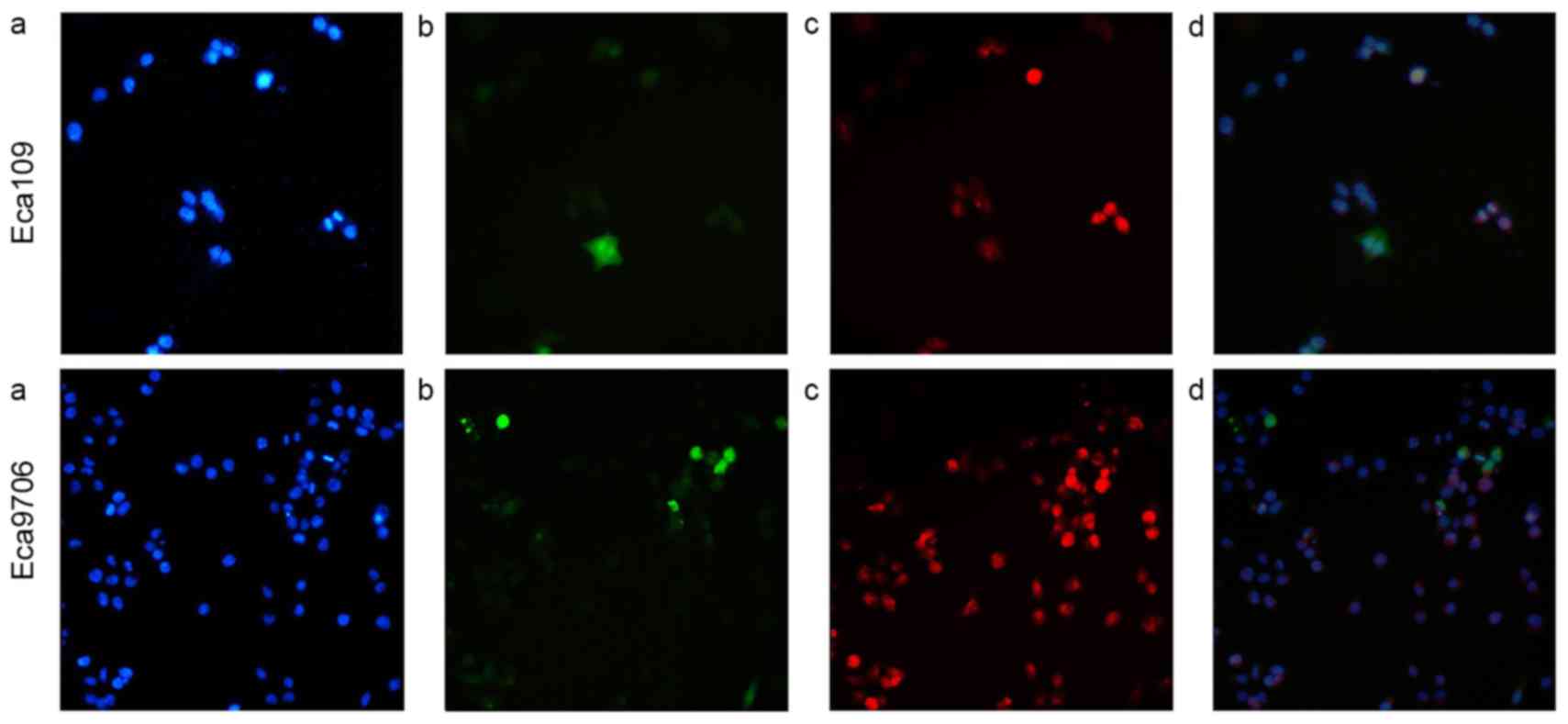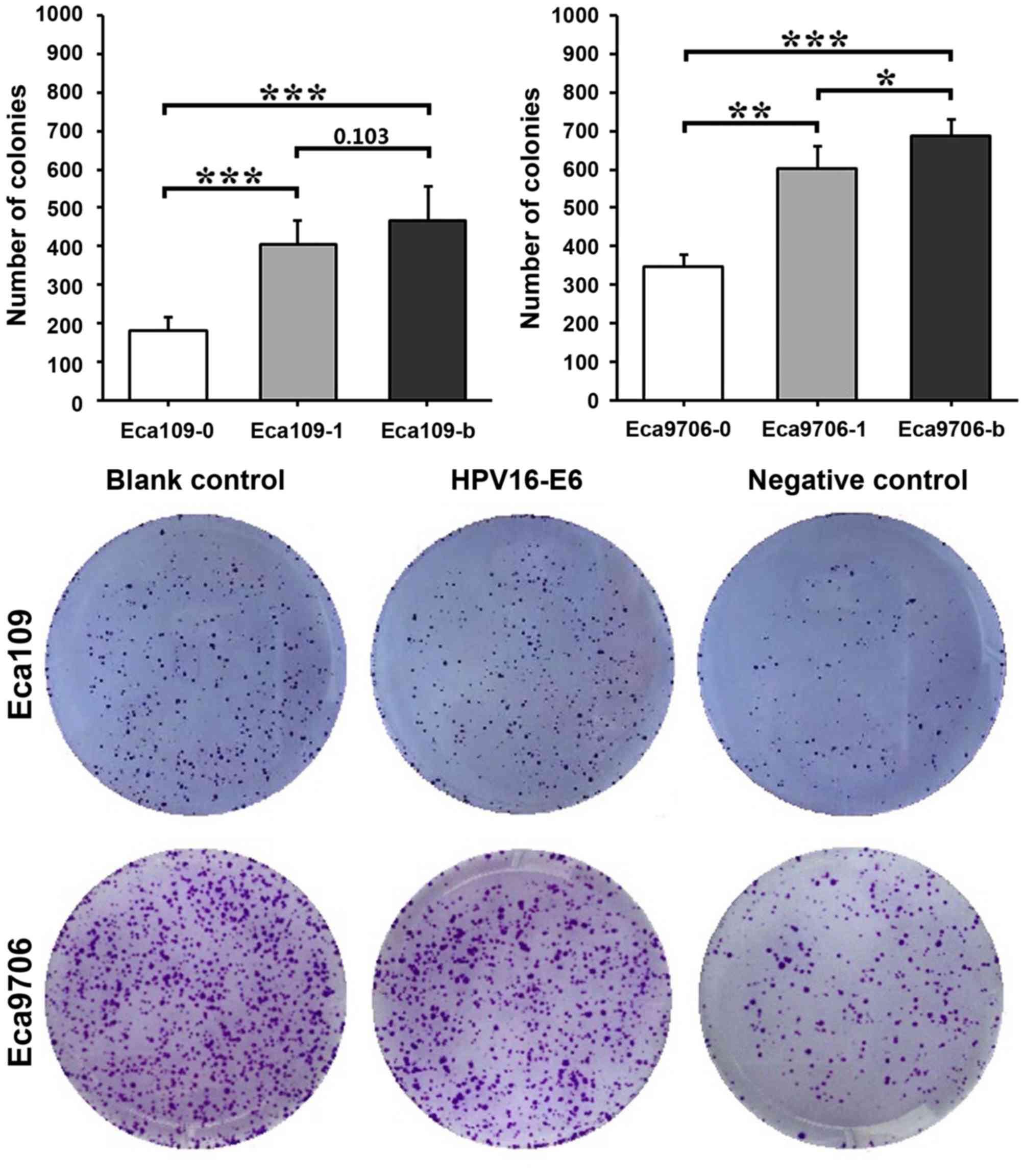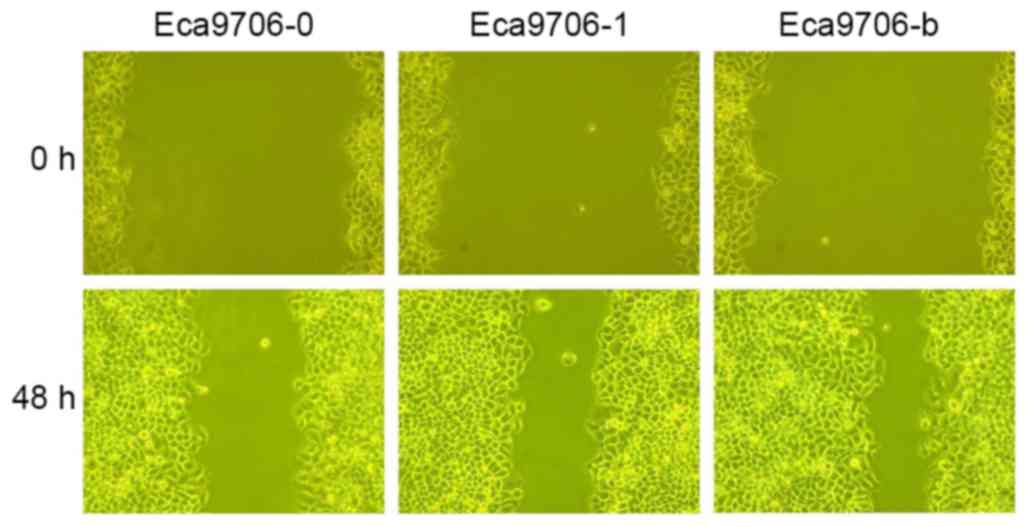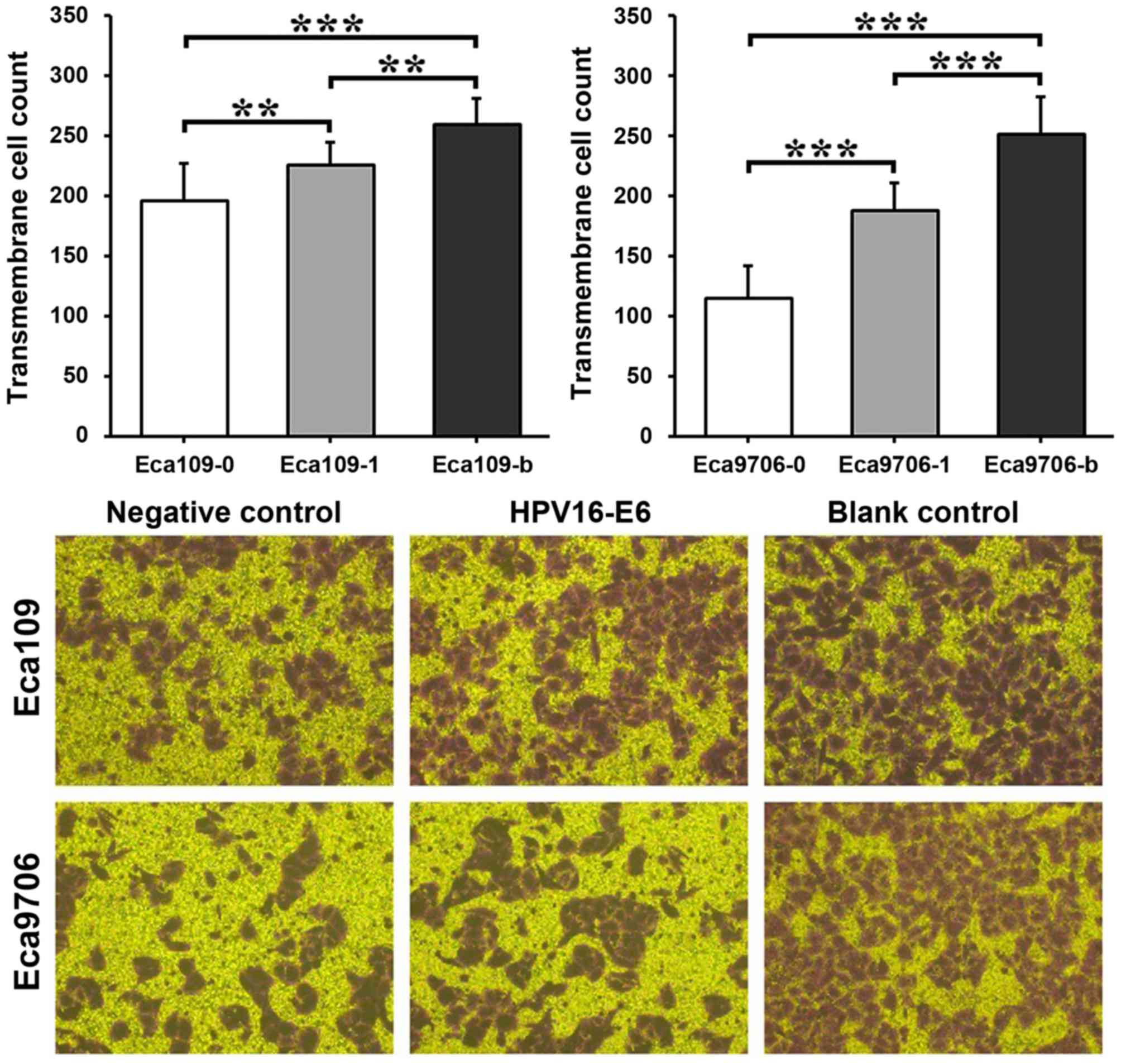|
1
|
Power DG, O'Sulleabhain C and Murphy TJ:
Preoperative chemoradiotherapy for esophageal cancer. Australasian
Radiol. 43:215–219. 2001.
|
|
2
|
Lin Y, Totsuka Y, He Y, Kikuchi S, Qiao Y,
Ueda J, Wei W, Inoue M and Tanaka H: Epidemiology of esophageal
cancer in Japan and China. J Epidemiol. 23:233–242. 2013.
View Article : Google Scholar : PubMed/NCBI
|
|
3
|
Chen W, Zheng R, Zhang S, Zeng H, Fan Y,
Qiao Y and Zhou Q: Esophageal cancer incidence and mortality in
China, 2010. Thoracic Cancer. 5:343–348. 2014. View Article : Google Scholar : PubMed/NCBI
|
|
4
|
Cao BW, Jing-Lin YU, Huan HE, Shen-ta LI
and Yu-lian Z: Meta-analysis on the Relationship between HPV
infection and esophageal cancer in Chinese Population. J Capital
Med Univ. 97:148–150. 2010.
|
|
5
|
Wang X, Tian X, Liu F, Zhao Y, Sun M, Chen
D, Lu C, Wang Z, Shi X, Zhang Q, et al: Detection of HPV DNA in
esophageal cancer specimens from different regions and ethnic
groups: A descriptive study. BMC Cancer. 10:192010. View Article : Google Scholar : PubMed/NCBI
|
|
6
|
Zhou Y, Pan Y, Zhang S, Shi X, Ning T and
Ke Y: Increased phosphorylation of p70 S6 kinase is associated with
HPV16 infection in cervical cancer and esophageal cancer. Br J
Cancer. 97:218–222. 2007. View Article : Google Scholar : PubMed/NCBI
|
|
7
|
Chen WG, Yang CM, Xu LH, Zhang N, Liu XY,
Ma YG, Huo XL, Han YS, Tian DA and Zheng Y: Gene chip technology
used in the detection of HPV infection in esophageal cancer of
Kazakh Chinese in Xinjiang province. J Huazhong Univ Sci Technolog
Med Sci. 34:343–347. 2014. View Article : Google Scholar : PubMed/NCBI
|
|
8
|
Dong GC: Multiple PCR-mass spectrometry
detection of kazak in xinjiang esophageal cancer HPV infection and
genotype distribution. Xinjiang Shihezi Univ. 26–27. 2014.
|
|
9
|
Chen YW, Wu MF, Wand J, Yeh KT, Goan YG,
Chiou HL, Chen CY and Lee H: Human papillomavirus 16/18 E6
oncoprotein is expressed in lung cancer and related with p53
inactivation. Cancer Res. 67:10686–10693. 2007. View Article : Google Scholar : PubMed/NCBI
|
|
10
|
Skinner SR, Apter D, De Carvalho N, Harper
DM, Konno R, Paavonen J, Romanowski B, Roteli-Martins C, Burlet N,
Mihalyi A and Struyf F: Human papillomavirus (HPV)-16/18
AS04-adjuvanted vaccine for the prevention of cervical cancer and
HPV-related diseases. Expert Rev Vaccines. 15:367–387.
2016.PubMed/NCBI
|
|
11
|
Moody CA and Laimins LA: Human
papillomavirus oncoproteins: Pathways to transformation. Nat Rev
Cancer. 10:550–560. 2010. View
Article : Google Scholar : PubMed/NCBI
|
|
12
|
Huang H, Zhang B, Chen W, Zhou SM, Zhang
YX, Gao L, Xu ZG, Qiao YL and Tang PZ: Human papillomavirus
infection and prognostic predictors in patients with oropharyngeal
squamous cell carcinoma. Asian Pac J Cancer Prev. 13:891–896. 2012.
View Article : Google Scholar : PubMed/NCBI
|
|
13
|
Talora C, Sgroi DC, Crum CP and Dotto GP:
Specific down-modulation of Notch1 signaling in cervical cancer
cells is required for sustained HPV-E6/E7 expression and late steps
of malignant transformation. Genes Dev. 16:2252–2263. 2002.
View Article : Google Scholar : PubMed/NCBI
|
|
14
|
Rosty C, Sheffer M, Tsafrir D, Stransky N,
Tsafrir I, Peter M, de Crémoux P, de La Rochefordière A, Salmon R,
Dorval T, et al: Identification of a proliferation gene cluster
associated with HPV E6/E7 expression level and viral DNA load in
invasive cervical carcinoma. Oncogene. 24:7094–7104. 2005.
View Article : Google Scholar : PubMed/NCBI
|
|
15
|
Xu CL, Qian XL, Zhou XS, Zhao QZ and Li
YC: Expression of HPV16-E6 and E7 oncoproteins in squamous cell
carcinoma tissues of esophageal cancer and non-cancer tissues. Ai
Zheng. 23:165–168. 2004.(In Chinese). PubMed/NCBI
|
|
16
|
Rayner MH, Sadler PJ and Scawen MD: NMR
studies of a bacterial cell culture medium (LB broth): Cyclic
nucleotides in yeast extracts. FEMS Microbiol Lett. 56:217–221.
1990. View Article : Google Scholar : PubMed/NCBI
|
|
17
|
Park CS: Effect of Tryptic Soy Broth (TSB)
and Luria-Bertani (LB) medium on production of subtilisin CP-1 from
Bacillus sp. CP-1 and Characterization of Subtilisin CP-1. Archives
Clin Psychiatry. 22:250–255. 2012.
|
|
18
|
Livak KJ and Schmittgen TD: Analysis of
relative gene expression data using real-time quantitative PCR and
2(-Delta Delta C(T)) method. Methods. 25:402–408. 2001. View Article : Google Scholar : PubMed/NCBI
|
|
19
|
Syrjänen KJ: Histological changes
identical to those of condylomatous lesions found in esophageal
squamous cell carcinomas. Arch Geschwustforsch. 52:283–292.
1982.
|
|
20
|
Gu LY, Hou Saliman XL, et al: HPV16
infection and kazak in xinjiang esophageal cancer and clinical
pathology study. Chin J Cancer. 9:68–672. 2010.
|
|
21
|
O'rorke MA, Ellison MV, Murray LJ, Moran
M, James J and Anderson LA: Human papillomavirus related head and
neck cancer survival: A systematic review and meta-analysis. Oral
Oncol. 48:1191–1201. 2012. View Article : Google Scholar : PubMed/NCBI
|
|
22
|
Jiang LZ, Lv CF, Lu HY, et al: HPV16e6
protein element D_1, cell cycle and telomerase reverse
transcriptase in the tissue of nasopharyngeal carcinoma and
significance. J Sec Military Med Univ. 12:67–1371. 2009.
|
|
23
|
Liu M, Zeng HC, Zhang XL, Zhu J, Huang JF,
Zhang X and Xia M: Study on human papillomavirus infection and loss
of heterozygosity of microsatellite in esophageal cancer. Zhonghua
Liu Xing Bing Xue Za Zhi. 28:1203–1206. 2007.(In Chinese).
PubMed/NCBI
|
|
24
|
Miller D, Puricelli MD and Stack MS:
Virology and molecular pathogenesis of HPV (human
papillomavirus)-associated oropharyngeal squamous cell carcinoma.
Biochem J. 443:339–353. 2012. View Article : Google Scholar : PubMed/NCBI
|
|
25
|
Wu Y, Gao T, Wang X, Hu Y, Hu X, Hu Z,
Pang J, Li Z, Xue J, Feng M, et al: TALE nickase mediates high
efficient targeted transgene integration at the human multi-copy
ribosomal DNA locus. Biochem Biophys Res Commun. 446:261–266. 2014.
View Article : Google Scholar : PubMed/NCBI
|
|
26
|
Zhou YF, Chen XA, Ye M, et al: Orthogonal
design optimization of polyethylene imine mediated liver cancer
cell gene transfection efficiency of study. J Biomed Eng.
1:104–109. 2011.
|
|
27
|
Crook T, Tidy JA and Vousden KH:
Degradation of p53 can be targeted by HPV E6 sequences distinct
from those required for p53 binding and trans-activation. Cell.
67:547–556. 1991. View Article : Google Scholar : PubMed/NCBI
|
|
28
|
Wiest T, Schwarz E, Enders C,
Flechtenmacher C and Bosch FX: Involvement of intact HPV16 E6/E7
gene expression in head and neck cancers with unaltered p53 status
and perturbed pRb cell cycle control. Oncogene. 21:1510–1517. 2002.
View Article : Google Scholar : PubMed/NCBI
|
|
29
|
Havre PA, Yuan J, Hedrick L, Cho KR and
Glazer PM: p53 inactivation by HPV16 E6 results in increased
mutagenesis in human cells. Cancer Res. 55:4420–4424.
1995.PubMed/NCBI
|
|
30
|
Illiano E, Demurtas OC, Massa S, Di Bonito
P, Consalvi V, Chiaraluce R, Zanotto C, De Giuli Morghen C,
Radaelli A, Venuti A and Franconi R: Production of functional,
stable, unmutated recombinant human papillomavirus E6 oncoprotein:
Implications for HPV-tumor diagnosis and therapy. J Transl Med.
14:2242016. View Article : Google Scholar : PubMed/NCBI
|
|
31
|
Wang L, Dang YW, Mo XL, et al: The
cervical lesions in h-TERC gene amplification and the relationship
between h-TERT protein expression and the significance. J
Diagnostic Pathol J. 21:561–564. 2014.
|
|
32
|
Zhang H, Jin Y, Chen X, Jin C, Law S, Tsao
SW and Kwong YL: Papillomavirus type 16 E6/E7 and human telomerase
reverse transcriptase in esophageal cell immortalization and early
transformation. Cancer Lett. 245:184–194. 2007. View Article : Google Scholar : PubMed/NCBI
|
|
33
|
Weijzen S, Zlobin A, Braid M, Miele L and
Kast WM: HPV16 E6 and E7 oncoproteins regulate Notch-1 expression
and cooperate to induce transformation. J Cell Physiol.
194:356–362. 2003. View Article : Google Scholar : PubMed/NCBI
|
|
34
|
Cassetti MC, McElhiney SP, Shahabi V,
Pullen JK, Le Poole IC, Eiben GL, Smith LR and Kast WM: Antitumor
efficacy of Venezuelan equine encephalitis virus replicon particles
encoding mutated HPV16 E6 and E7 genes. Vaccine. 22:520–527. 2004.
View Article : Google Scholar : PubMed/NCBI
|















